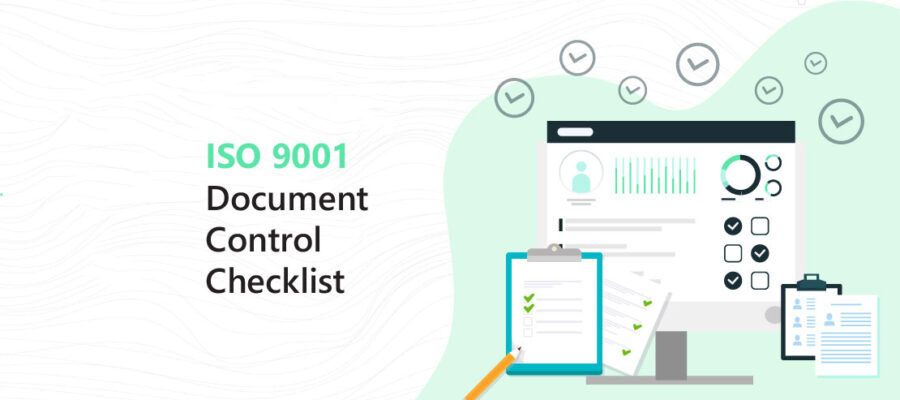ISO 9001 Document Control Checklist

Article Context:
ISO 9001
ISO 9001:2015 requires a list of obligatory documents.
The QMS‘s scope will include the following:
- Policy on quality.
- Goals for quality.
- Training, skill, experience, and qualification records
- Records of product/service requirements review
Organizations must develop a written method to approve papers for sufficiency prior to issuance. Documents should be reviewed, updated as needed, and re-approved. Determine the changes and the current revision state of the document. Provide relevant paperwork at sites of use. Ensure that the records are readable and easily identified. Control the dissemination of external documents by identifying them. Prevent unintentional use of obsolete documents. If old papers are kept, use appropriate identification
ISO 9001 enables an organization to adjust the documentation as applicable as long as the overall objectives are met. The change, however, does not decrease the need for accurate documentation. The standard states that “documented information” is required: When information is distributed or shared. To demonstrate (and keep proof of) the completion of a quality procedure and the outcomes.
To keep organizational knowledge such as Processes, Specifications and changes, Expectations, and goals, Monitoring, and evaluation, Analyses, reviews, assessments, validations, and Terminology Negotiations have resulted in decisions. Notifications Authorizations Taken Actions Inventory, assets, and property management Qualifications and job descriptions
ISO 9001 general documentation requirements are:-
Step 1: Obtaining leadership support
Step 2: Conduct a Gap Analysis
Step 3: Define the scope
Step 4: Put the QMS into action and write the QMS manual.
Step 5: Communicate internally
Step 6: Develop an audit strategy.
Step 7: Determine your roles and duties.
Step 8: Fine-tune the QMS and put system modifications in place.
Step 9: Internal audit.
Step 10: Apply for Stage 1 Audit.
Step 11: External auditing
Step 12: Passing the Audit
Document control processes help to understand how an organization maintains documents that may include approved documents, updated or corrected ones, and how changes are tracked. In addition, the process helps keep track of how documents are published for internal or external purposes.
Quality policy and objectives are documented.
ISO establishes the quality policy requirements and mandates documented quality policy. It also specifies the standards for quality goals. Here is a summary of ISO’s general documentation requirements:
- Policy on Quality
- Quality targets
- Quality guide
- Process flow charts
- Process maps and/or process descriptions
- Organizational diagrams
- Specifications
- Instructions for work and/or testing
- Internal communications documentation
- Production timetables
- Lists of approved suppliers
- Plans for testing and inspection
- Plans of high quality
FAQ's
What are the 6 documents required by ISO 9001?
- Control of Documents
- Control of Records
- Internal Audit
- Control of Nonconforming Product
- Corrective Action
- Preventive Action
What is a document control procedure?
A collection of policies and procedures ensures that the project team can access the required files, information, and all resource details. All document changes that include project plans, designs, or specifications can be streamlined using document control.
What is the control of documents in ISO?
ISO 9001 document control is an essential part of a Quality Management System. However, organizations carve their ways of documenting their quality management system (QMS).
Various documents related to process planning, operation, and control, as well as QMS installation and continuous improvement, are thus defined to result in enhanced Quality standard adherence
What are the four levels of the ISO documentation hierarchy?
- Policy on quality.
- Goals for quality.
- Training, skill, experience, and qualification records
- Records of product/service requirements review
What is the ISO standard for documentation?
The ISO has specifications about the minimum requirements mandatory to maintain the authenticity, integrity, and readability of documents held by an electronic document management system. Furthermore, maintaining electronic records management promotes the documents’ usability in organizational and legal contexts.